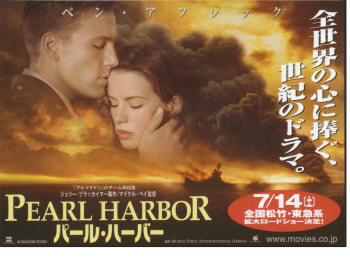"Pearl Harbor"
in 70mm DTS
|
This article first appeared in |
| Written by: Mike B Smith, DTS | Issue 66 - November 2001 |
|
|
Further in 70mm reading: |
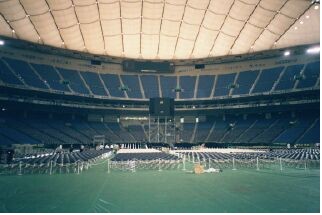 Because of it's odd shape, locals refer to the Dome as the Big Egg. The structure itself is very amazing. The entire roof is constructed from a membrane of fiberglass coated with Teflon. Air is pumped into the dome increasing inside air pressure, causing the membrane to swell outwards; this creates the roof, or ceiling. The membrane allows natural light to come in during the day. Because of it's odd shape, locals refer to the Dome as the Big Egg. The structure itself is very amazing. The entire roof is constructed from a membrane of fiberglass coated with Teflon. Air is pumped into the dome increasing inside air pressure, causing the membrane to swell outwards; this creates the roof, or ceiling. The membrane allows natural light to come in during the day.
The pressure difference is about .0003 atmospheres relative to outside. There is a large air lock allowing big trucks to drive in and out, and yet not disturb the pressure difference. No, your ears do not pop every time you enter or leave the Dome. The difference in this pressure is equivalent to the difference between the ground level and a 9th floor of a building. The Dome is used for other things besides baseball; such as concerts and, in this case, a very very big premier. |
|
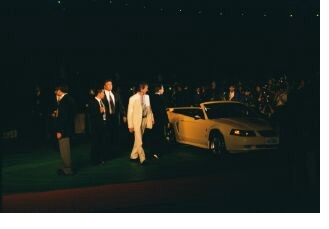 Stars
arriving Stars
arrivingPlanning for this event began over a year ago. The American premier of "Pearl Harbor", at Pearl Harbor, Hawaii on an aircraft carrier was shown in SDDS 35mm 8-track. The premiere in Tokyo was much larger and would need a bigger screen. In addition a 70mm print would be necessary. DTS, the only digital system that can easily supply 70mm digital sound on film, was considered the first choice. The setup at the Dome consisted of two projection booths constructed out of scaffolding 88 meters high. The primary projection room was at the very top. A backup projection room was located in the level below. The sound system consisted of a total of eight DTS-6D systems. |
|
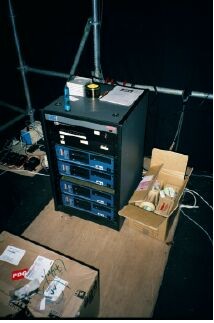 The DTS 8-track Playback System. The DTS 8-track Playback System.For DTS 8-track to work, two DTS-6D players were locked together to act as one. The first player had channels 1 - 5, which were assigned Left, Left Center, Center, Right Center, and Right. These are the stage channels and are located behind the massive screen that was approximately 50' tall with a 115' width. The second DTS-6D player held the last three channels 6 - 8. These channels were assigned Subwoofer, Left Surround, and Right Surround. The subs were located behind the screen and the surrounds were above the second level seating area. The movie runs about three hours and two minutes. Because of the length, normally only two show discs would be required, however in this special case a total of four were used to support 8 -track. |
|
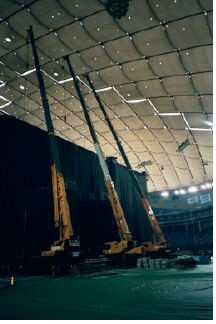 The
rear of the screen. The
rear of the screen.When you add things up including back up, eight players were running with sixteen discs spinning all for one film. The reason for the secondary projection system and so many extra DTS players are merely for emergency back up in case of some type of failure. The DTS players had been wired in such a way that if a failure should occur in the pair that was currently playing, it would automatically revert to another DTS system. The only manual emergency procedure would have been to switch to the back up projector in case of primary projector or lamp failure and of course a film break. Everything went well and only the primary projection system and the first set of DTS players were necessary. |
|
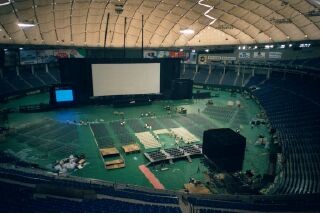 View from upper level. View from upper level.
Screen size was 50 feet tall with a 115-foot width. Video screens on both sides showed commercials during pre-show. The black box in lower right is the projection rooms. Just in front and below the projection rooms is the elevated VIP seating area. Although no exact numbers were given, it was estimated that twenty-five to thirty thousand attended the show. |
|
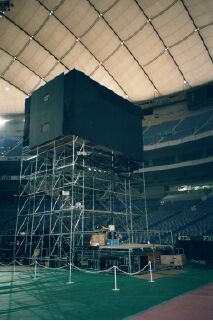 Projection Room Structure Projection Room StructureNote the projection ports. Top was the primary projection room, with the back up below. This structure was built on Home Plate and stood 88 meters. Yes it did sway a bit, especially when people came up or went down the stairs. Because it was not too stable the picture also moved, therefore no one was allowed up or down during the show. Two projection rooms one above the other for a total of 88 meters high. |
|
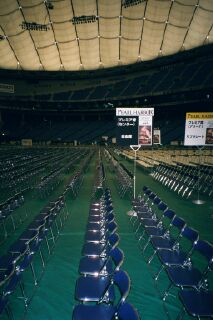 Note how straight the rows are laid out. The Japanese are very precise and set the seats up using string for perfect alignment. Note how straight the rows are laid out. The Japanese are very precise and set the seats up using string for perfect alignment. |
|
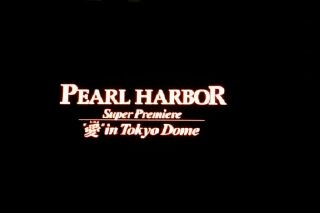 Sign advertises for the film. Sign advertises for the film.Note the Japanese symbol before "in Tokyo Dome" it translates to the word "LOVE" Because of the sensitive content of this film it was feared that it might cause problems so it was promoted as a love story. Not all Japanese read English, so the Japanese symbol was used to insure everyone could read the word love. |
|
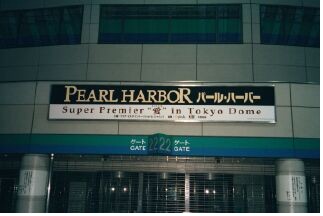 Main entrance into the Tokyo Dome. Main entrance into the Tokyo Dome.Sign above door says, "Pearl Harbor Super Premiere Love in Tokyo Dome". Due to the nature of the content the show was advertised as a love story. All tickets were free, you had to request them from magazine ads. Although free, scalpers were selling tickets out front. |
|
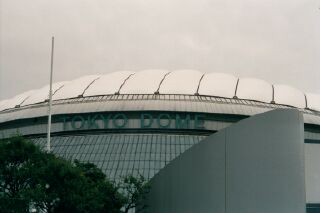 The
dome outside The
dome outside |
|
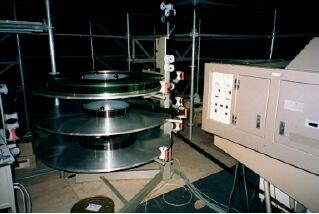 Projection
equipment Projection
equipment |
|
|
Go: back
- top - back issues Updated 22-01-25 |

